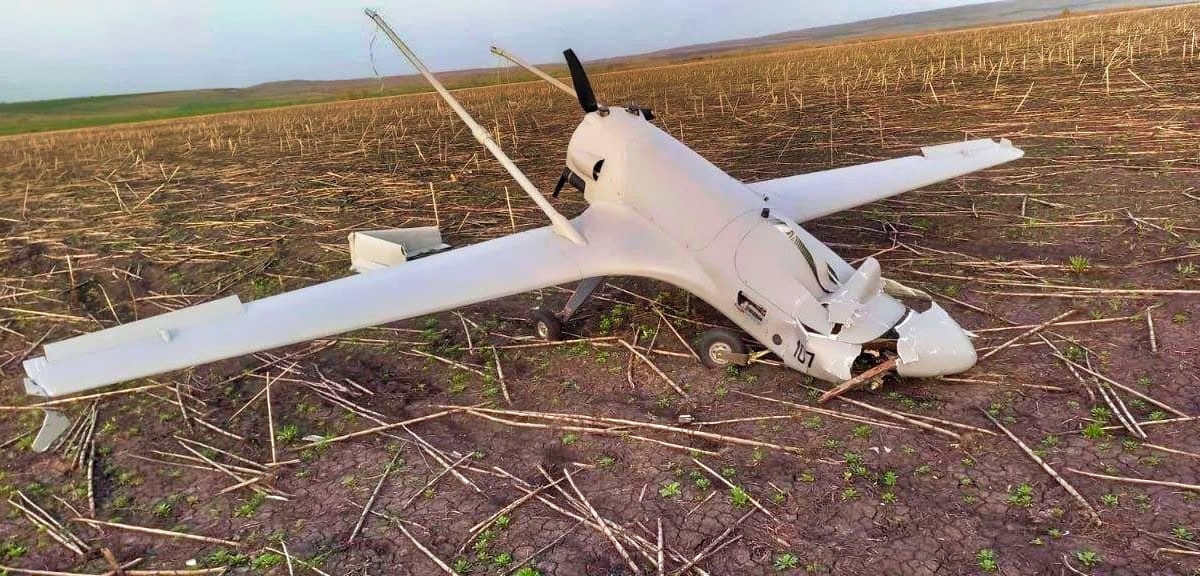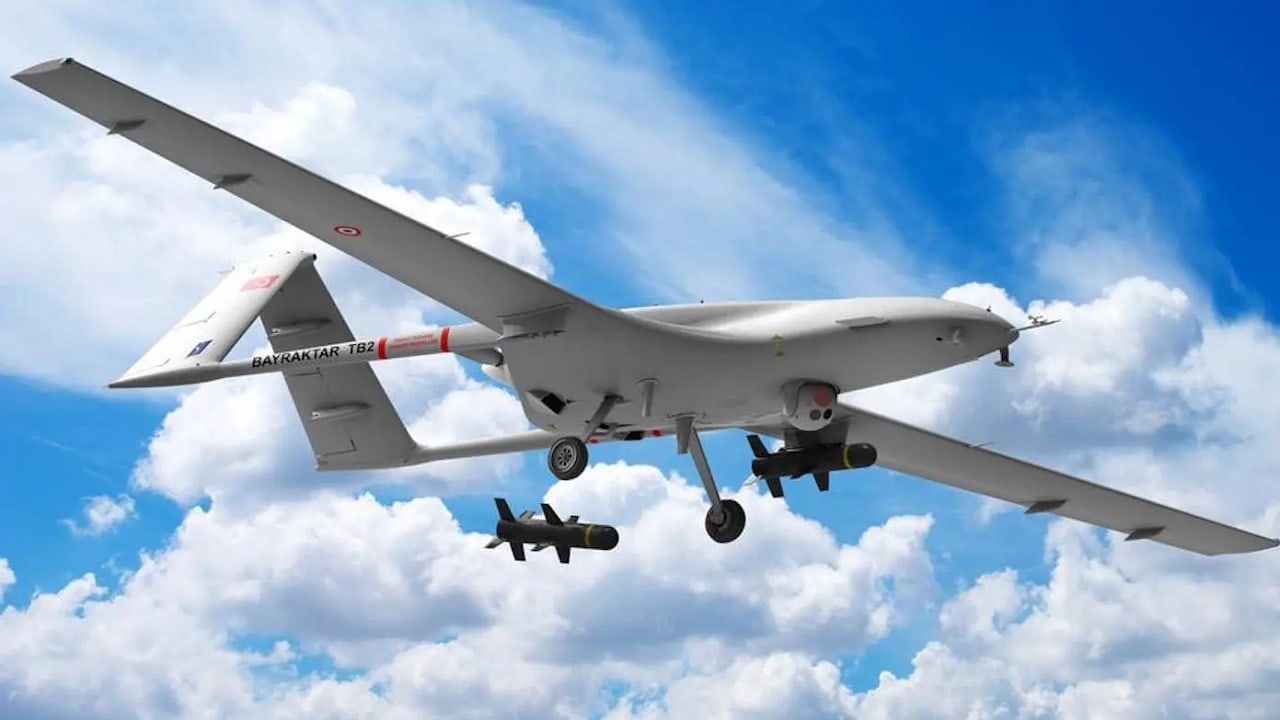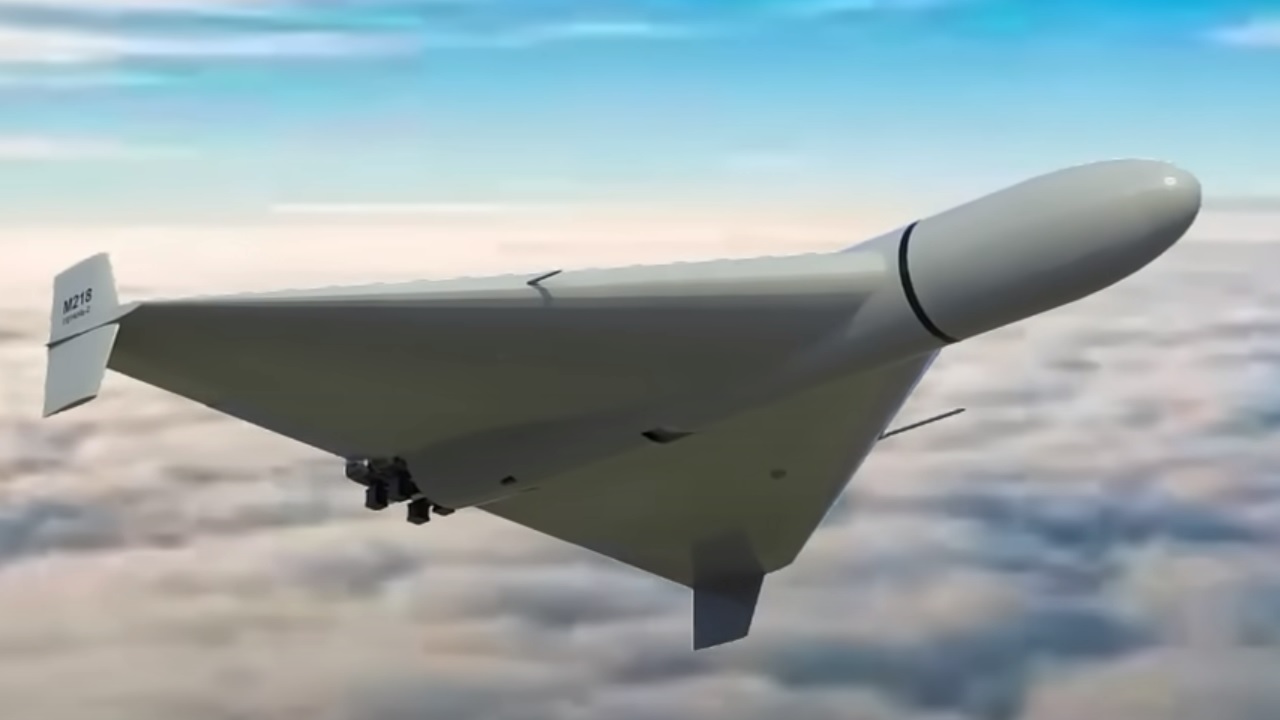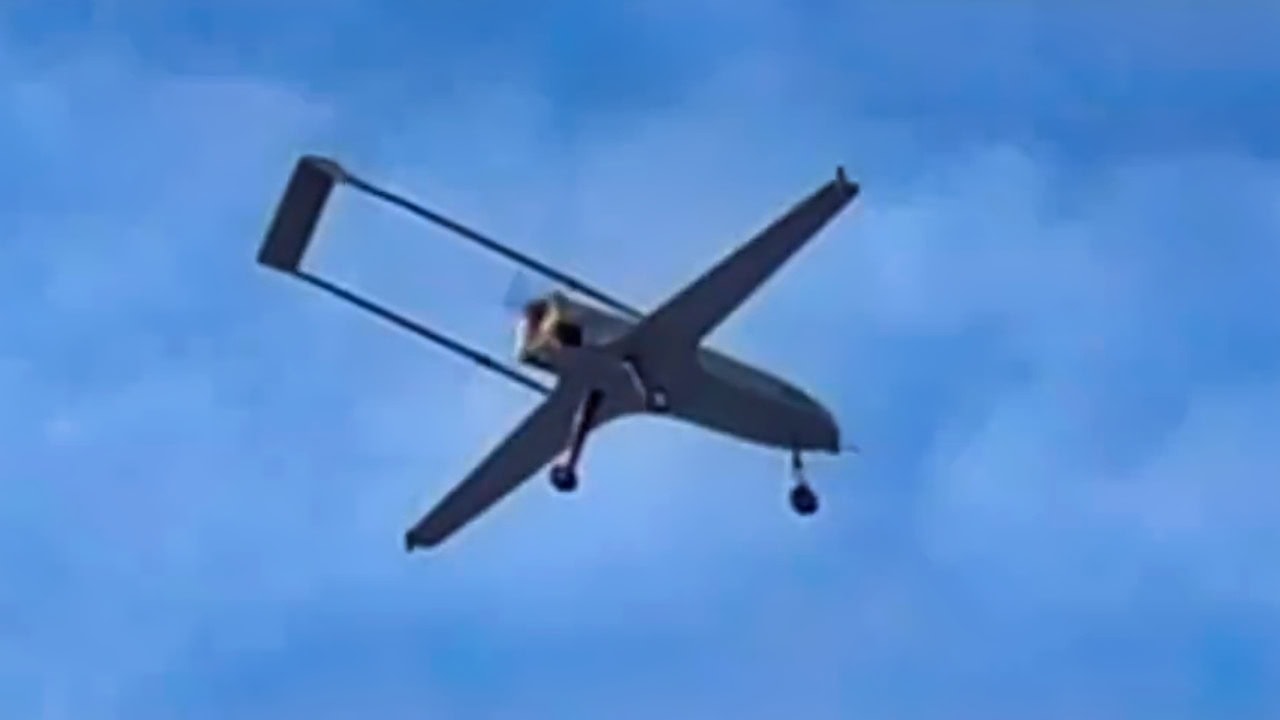Key Points and Summary: Ukraine’s Lyutyi long-range attack drone, developed by state-owned Ukroboronprom and linked to Antonov, is proving highly effective against Russian oil infrastructure.
-With a range exceeding 620 miles and a 165-pound warhead, the Lyutyi has been responsible for a majority of recent successful strikes deep inside Russia.
-The drone’s sophisticated design, including advanced navigation systems and a modular payload, allows it to evade Russian air defenses.
-However, scaling up production to meet Ukraine’s ambitious goals remains a significant challenge, with cost and manufacturing complexities potentially limiting its impact. The Lyutyi’s success highlights Ukraine’s growing drone warfare capabilities.
Lyutyi: Ukraine’s Homegrown Drone Terrorizing Russian Oil Refineries (
On January 29th, Ukrainian attack drones hit two Russian oil refineries, one in Kstovo and one in Novoshakhtinsk, as well as an oil pumping station along a major pipeline at Novozybkiv. All three resulted in spectacular fires that lit up the night sky and were shared on social media. All three are hundreds of miles from the front line in Ukraine. Such attacks are getting more common and prove the growing effectiveness of the Ukrainian drone arsenal and of one drone in particular, known as Lyutyi – which can mean either ‘Fierce’ or ‘February.’
The Lyutyi is credited with as many as 80 percent of the hits on Russia’s oil facilities, as well as other strategic targets such as the Engels airbase. And while many of Ukraine’s bewildering variety of long-range strike drones—more than 20 types have been identified—are made by small startups, Lyutyi is produced by the state company Ukroboronprom. It was recently revealed that the drone’s official designation is AN-196, crediting it to the famed Antonov aircraft company, now part of Ukroboronprom.
What is the secret of this fierce little drone’s success?
Lyutyi Long-Range Attack Drone: Not Just a ‘Poor Man’s Cruise Missile’
Analyst HI Sutton notes that Lyutyi is engineered like a light aircraft, unlike some models that are crudely assembled from plastic piping and other low-cost materials. He also comments that the tail and other details resemble an earlier Antonov design, the AN-BK-1 Horlytsia (“Turtle Dove”).
Lyutyi’s airframe is made of fiberglass reinforced by metal mesh, and it has a distinctive dual-boom fuselage with a pusher-propeller engine at the rear. Russian images of downed drones suggest this is a German-made Hirth F-23 50-horsepower aviation engine, long used in ultralight aircraft like the Sadler Vampire. The modular design means different warheads or other payloads can be installed easily.
According to Ukrainian media, Lyutyi is 15 feet long with a span of 22 feet and a takeoff weight of up to 660 pounds, including a 165-pound warhead. It cruises at around 100 mph with a design range of 620 miles (1,000 kilometers). However, some recent Lyutyi strikes have hit targets at longer ranges, and Ukrainian officials claim that the range has doubled. If accurate, this was likely achieved by carrying a smaller warhead and more fuel.
The Lyutyi was designed to hit back at targets deep inside Russia at a time when Ukraine was not allowed to fire U.S.-supplied weapons over the border. This is why this drone is seen as a ‘poor man’s cruise missile’: a smaller, slower, cheaper, and less powerful version of weapons like the jet-powered Tomahawk cruise missiles used by American forces.
However, seeing Lyutyi as second-best fails to grasp its advantages and why it is uniquely suited to its missions.
Since late 2022, Ukraine has been under constant attack from Russian Shahed drones, an Iranian design now made in Russia. The number of Shaheds and the fact that they come in waves makes them harder to stop. Ukraine simply does not have enough surface-to-air missiles to hit all of them and relies on ‘mobile fire groups’ with AA cannons and heavy machine guns. Even then, some Shahed still get through, and they place a contract pressure on air defenses. With similar specifications, Lyutyi might better be seen as a Ukrainian Shahed.
Rather than putting all the explosives’ eggs into one basket (so to speak), having several Lyutyis rather than one cruise missile means there is a better chance of some getting through and hitting multiple targets. This is important for one type of target in particular.
Crosshairs on Oil and Gas facilities
Russia’s economy is founded on oil and gas, revenues from which accounted for 45 percent of the federal budget in 2021. The Lyutyi development team told the Ukrainian newspaper Pravda that they specifically wanted to target Russia’s oil industry.
Hitting oil works in several ways. There is the obvious economic effect, but also the reduction in fuel supplies for the armed forces, the morale effect for both sides of seeing blazing refineries, and the psychological pressure on the Russian people. In a country where fuel is cheap and plentiful, gas stations with no fuel send a powerful message that something is wrong, whatever the regime tells them.
Oil and gas facilities are soft targets. Unlike say, bunkers or hardened aircraft shelters, they do not require a thousand-pound warhead. A few pounds of explosives in the right place will ignite a fuel storage tank, and the end result is the same as a hit from a cruise missile. An attack drone just needs to bring a match to the fuel, making a large warhead an unnecessary luxury.
There is a distinct echo of the campaign waged by Houthi rebels against Saudia Arabia. The Samad-3 drones and other weapons sourced from Iran struck various Saudi oil facilities in a series of high-profile attacks (notably the Abqaiq strike in 2019). They likely played a role in persuading the Saudis to agree to a ceasefire in 2022.

Lyutyi Drone from Ukraine Social Media.
While Russia’s air defenses are set up to deal with small numbers of high-speed jets or cruise missiles, they cannot handle mass attacks by slow drones. And the vast area to be defended makes Ukrainian-style mobile defense units impractical.
In the latest round of drone strikes at three locations, the locals reported no air defense missiles were launched. Earlier in the war, Russia started using surface-to-air S-300s as expensive surface-to-surface missiles, leading some to speculate that they may be running low on ammunition.
Russia is a leading player in electronic warfare, but this, too, has failed to stop the Lyutyi. While roughly half of the Russian Shaheds are brought down by electronic warfare—or spoofed off-course by Ukraine’s Pokrova system , which feeds them false locations—Lyutyi reportedly has backup inertial guidance, and GPS/Glonass jamming has little effect. It may also now have the new Eagle Eyes AI-based system for visual navigation. This is essentially a low-cost modern version of the Tomahawk’s Digital Scene Matching developed in pre-GPS days with 1980s computers.
Other factors also make Lyutyis hard to stop. A CNN documentary crew following a Lyutyi launch team in October 2024 was told several days of planning went into each strike. Russian air defenses were mapped out, and the drones followed complex flight paths through the gaps between them, involving dozens of waypoints.
While Ukraine brought down an estimated 97 percent of the incoming Shaheds in December 2024, Russia’s rate appears much lower. And the Lyutyis are targeting expensive and flammable oil facilities like those at Kstovo, Novoshakhtinsk, and Novozybkiv, so every hit counts.
Success Out of Failure
Most of Ukraine’s drone fleet was designed from a blank sheet of paper, starting from the invasion in 2022 at the earliest. But as HI Sutton noted, Lyutyi’s roots go back much further.
In 2016, aircraft makers Antonov, best known for the AN-225 Mriya, the largest cargo aircraft in the world, revealed they were working on a tactical drone called the AN-BK-1 Horlytsia [“Turtledove “). This would provide a capability similar to the Turkish Bayraktar TB2, carrying a payload of 165 pounds and a range of 600 miles. These specifications are exactly the same as the Lyutyi, the difference being that Horlytsia was a reusable drone capable of reconnaissance or strikes with lightweight missiles.

TB2 Drone. Image Credit: Creative Commons.
The project was not a success. The Horlytsia made a public test flight in November 2017, but the Ukrainian media were less than impressed when they discovered it was not factory-made but a handmade prototype using Japanese electronics and components from hobby drones. After 18 months of development, the new drone did not even have a camera.
The Horlytsia dropped out of sight. Secrecy laws protect Ukrainian defense projects, so there is no information about what happened to Horlytsia or how much government money went into a project that seemingly produced nothing. By 2021, Ukraine was buying Bayraktar TB2s from Turkey. Antonov announced that they were developing a locally-made alternative, the Gorlitsa-2. Nothing was said about what had happened to the Horlytsia -1 four years earlier. And the Horlytsia-2 also disappeared.
In November 2022, Deputy Minister of Strategic Industries Anna Gvozdyar published a photo of a model of a new Ukrainian drone on her Facebook page. The drone, which bears a strong resemblance to the Gorlitsa-1 and bore the legend Lyutyi 02, as well as the quote “I will repay” (likely a reference to Romans 12:19 – “’ “Vengeance is mine; I will repay,’ says the Lord.”)
At this point, a number of attack drones were being made privately by startups with donations from fundraising groups, supplemented with long-range Phoenix Ghost drones from the U.S. State involvement, which opened the possibility of scaling things up.
The first customers were the Main Intelligence Directorate and the SBU (the internal security agency), who seemed skeptical of the small drone’s chances but flew successful missions against targets in Crimea and St Petersburg in 2023. By May 2024, various intelligence, special forces, and air force units were operating the drones.
Lyutyi’s are operated by mobile units that deploy to the launch area, which is never in the same place twice. The Lyuty is assembled, armed, and programmed and takes off like an aircraft on a stretch of road or runway while the team disperses before the Russians can hit the launch site. Launches are coordinated so several Lyutyi enter Russian airspace simultaneously, along with other types, some of which are decoys with radar reflectors.
The Challenge of Scaling
Ukraine’s long-range attack drone manufacturing went from zero in 2022 to under 1,000 in 2023, a claim to 6,000 in 2024. President Zelensky has said the country will make 30,000 long-range drones in 2025.
The 2024 attacks hit a significant fraction of Russia’s oil capacity. If the volume of drones can be ramped up and if the hit rate continues to be high, in 2025, Lyutyis will deal a major strategic blow to Russia.

Shahed-136 Drone. Image Credit: YouTube Screenshot.
Lyutyi may not lend itself to mass production or some other designs. It is certainly well-made, but deriving from a design for a reconnaissance drone, it may be over-engineered for a single-use attack drone, and scaling up could be a challenge. Rivals like the Terminal Autonomy, whose AQ-400 Scythe has been used in small numbers, are significantly more affordable. The Scythe is wooden, and the parts are designed to be made using existing machinery and assembled like flat-pack furniture by unskilled labor.
Ukrainian sources quite a price of $200k for the Lyutyi, which seems high – especially when the Russian Shaheds reputedly cost about $30-$50k each. At that price, 30,000 Lyutyis would be a cool $6 billion.
Before the war, Ukraine’s state defense industry had a reputation for inefficiency, a lack of transparency, and, at times, outright corruption. The failure of the original Horlytsia-1 is a case in point.
Lyutyi can potentially change the course of the war—if only it could be built in sufficient numbers at an affordable price.
However, Ukraine’s drone ecosystem has thrown up several potential alternatives, like the Lord, UJ-26, Beaver, and Scythe, and the base to support them. Free market competition may be the driver that turns Ukraine’s technological edge into a war-winner.
About the Author: Drone Expert David Hambling
David Hambling is a London-based journalist, author, and consultant specializing in defense technology with over 20 years of experience. He writes for Aviation Week, Forbes, The Economist, New Scientist, Popular Mechanics, WIRED and others. His books include “Weapons Grade: How Modern Warfare Gave Birth to Our High-tech World” (2005) and “Swarm Troopers: How small drones will conquer the world” (2015). He has been closely watching the continued evolution of small military drones. Follow him @David_Hambling

